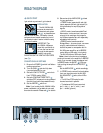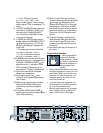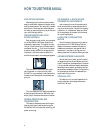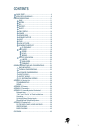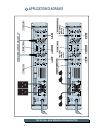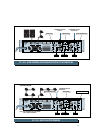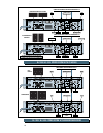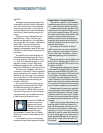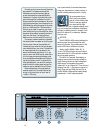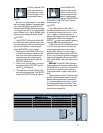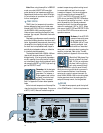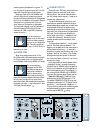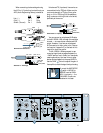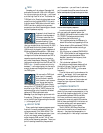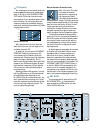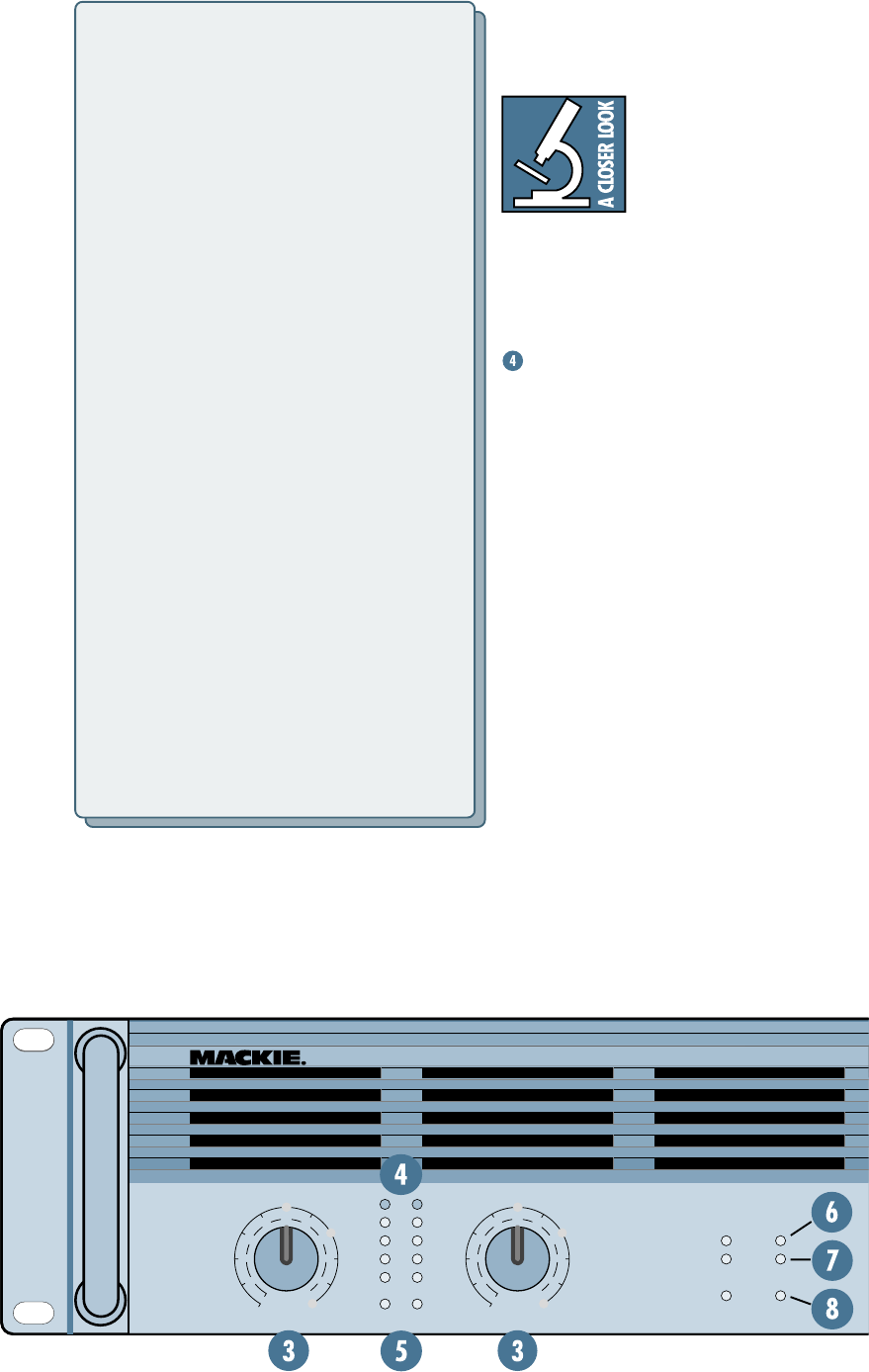
12
tion or sound check, then leave them alone,
using your signal source (usually a mixer) to
control listening levels as you work. Or play.
You may wonder why we
didn’t use just one stereo
control to control both sides.
That’s in case your applica-
tion requires a left/right
imbalance (due to an irregularly shaped room)
or if you’re using the two sides for completely
different purposes (monitor in channel 1 and
side-fill in channel 2, for instance). Besides,
they look cool.
METERS
The M•1200/M•1400’s meters indicate the
relative output level of the amplifier refer-
enced to full power. The numbers next to the
meter’s LEDs are in dB below full power.
Ideally, the M•1200/M•1400’s
–20
,
–9
,
–6,
and
–3
LEDs will flicker at normal signal
levels, while the
OL
LED may flicker occasion-
ally during peak moments.
OL
is short for Overload. Overloading, or
clipping, occurs when the output voltage no
longer linearly follows the input voltage and
simply stops. This causes a sine wave to
“square off,” or get “clipped off.” Thus, the term
clipping. Fear not — this scenario is quite un-
likely. Even with the
GAIN
controls fully up,
the M•1200/M•1400 amplifiers easily accept
professional “+4 dBu” operating levels.
So what are the pros and cons of these two
approaches? The reason some amplifier
manufacturers use the constant gain ap-
proach is because the noise specification
looks better. It’s a fact of physics that as the
gain of the amplifier increases, the circuit
noise is amplified and increases too. By main-
taining a constant gain, the noise spec for an
800W amplifier can look as good as the noise
spec for a 100W amplifier. The downside to
this is that you have to crank up your mixer
level feeding the input of the amplifier, losing
headroom and possibly increasing the noise
level from the mixer (unless you have a
Mackie mixer with low-noise VLZ circuitry!).
Conversely, constant sensitivity demands
that as the power increases, so must the gain.
Yes, the output noise of the amplifier will
increase, but you maintain the critical head-
room available from your mixer. The addition-
al noise is generally not a problem in live
sound reinforcement situations. If it is, you
can turn down the
GAIN
control a few clicks
to find a happy compromise between noise
floor and headroom available (see “Optimiz-
ing Sound System Levels” in Appendix D).
As an added benefit, you can drive multiple
amplifiers with the same signal and get the
maximum power available from all of them.
Mackie subscribes to the philosophy of
constant sensitivity. Our amplifiers can be
driven to full power with an input level of
+4 dBu (1.23V rms).
OL
–3
–6
–9
–20
–3
–6
–9
–20
SIG
OL
SIG
CH
1
30
28
26
20
22
18
2416
14
8
0
0
1.23v (+4dBu)
SENSITIVITY
GAIN/dB
CH
2
PROTECT
COLD HOT
SHORT
TEMP STATUS
INTERNAL STATUS
CH
1
CH
2
CH
1& 2
3v
2v
1v
30
28
26
20
22
18
2416
14
8
0
0
1.23v (+4dBu)
SENSITIVITY
GAIN/dB
3v
2v
1v
FULL SYMMETRY DUAL DIFFERENTIAL HIGH CURRENT DESIGN



